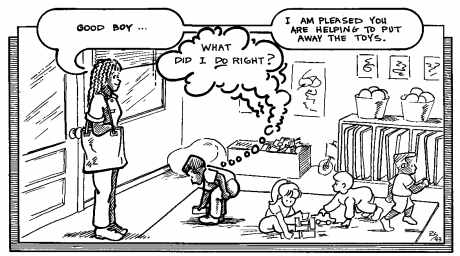Just a few days ago, I saw someone at work do something cool (and ahead of schedule) at work, and their manager said “Great job!” to them. That was it. Done and done. That’s cool in one way — hell, it’s cool in many ways — because who doesn’t like to hear someone responsible for their professional development say “Great job?” We all do, of course. We’re like salivating dogs for positive reinforcement, especially in an oft-respect-devoid workplace.
Here’s the essential problem: saying “Great job!” is easy and it doesn’t take very long. (2-3 seconds max.) We’re all super busy, right? (Or we’re worshipping at the temple of busy.) To give specific praise is a little bit harder. You’d have to go from “great job!” to explaining what makes it a great job. That could up it from 2-3 seconds to 40-50 seconds. People don’t feel they can spare that time.
Here’s the other essential problem:
Most leaders wait until something goes wrong before they even think about giving employee feedback. And then it’s only negative. Negative reinforcement can work to cease unwanted behavior, but it does nothing to optimize performance, nor is it nearly as powerful a teaching tool as positive reinforcement. As anyone who has been on the receiving end of negative reinforcement knows, the responding motivation is to figure out the best way to avoid getting “yelled at” again. Negative reinforcement might stop an employee’s undesirable behavior, but there’s no guarantee that the behavior that replaces it will be even close to what you want.
I’ve talked a little about this before: managers often confuse the idea of “accountability” and “scaring someone,” right? And there are so many essential issues with even attempting to give feedback at work — so much so that we went all the way in the other direction and created this idea of 360-degree evaluations/feedback, which are really just … akin to a concentration camp.
If you honestly want to invest in your people, the first step has to be actual, specific, real-time, what-exactly-did-I-do-well-oh-OK-it-was-that praise. How can you possibly foster a notion of “employee engagement” without that step? Seems like it would be hard, no? Otherwise everyone’s just walking around doing the generic “Great job!” stuff, and ultimately — without promotions or more money or more responsibilities — that’s not going to engage anyone. But specific, actionable (buzzword, baby!) praise would.
